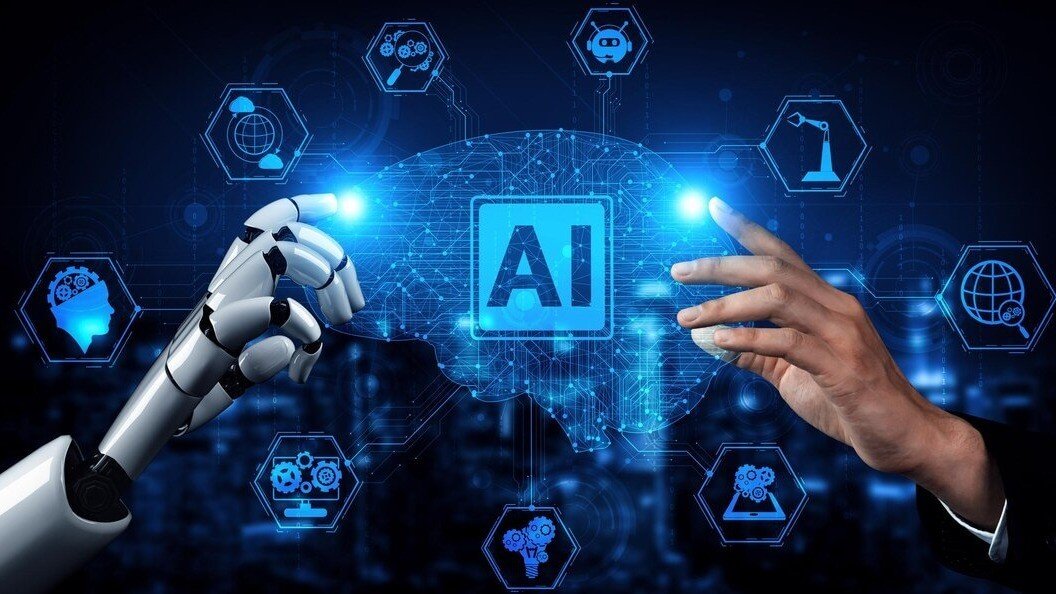In the past, UI design was an extremely fine-tuned, human-driven process that was grounded on creativity, technical know-how, and a clear comprehension of user needs and behaviors. Nowadays, AI is complementing the entire process; it is helping streamline workflows, create more holistic experiences, and work faster to build intuitive and user-centered interfaces than ever before.
AI’s Impact on User Interface Design
UI design refers to the organization, structure, and interactivity of a website or an application. It is utilized for the intent of making digital products consumable by consumers by making it easy for them to use and interact with digital products. All this has been done at record levels using AI.
Enhanced Graphics with AI Image Generation
It is never an easy task to incorporate quality images in UI design. Pictures and stock images are good enough for some project demands, yet they sound hollow and are empty to the user project needs. AI images have reversed this by being able to help the platform provide the designer with room to design their own images to suit the purposes of their respective projects.
AI image generator is able to produce quality and tailored images from the input source text, and UI designers are able to produce images up to the look and feel touch of the UI design. A designer developing an app in the healthcare domain, for example, can instruct an AI image generator to generate some images on healthcare or fitness that would suit the theme of the app. This on-demand construction of bespoke images simplifies the design process and builds the imagery more naturally and gracefully.
Personalization at Scale
Most jarring of how UI design is being altered by AI is likely to be one of personalization. The old UI design used to be strictly one-size-fits-all with little or no capability for doing preference-based or behavior-based personalization. AI-based algorithms are now capable of monitoring user behavior and adapting the interface in real time to deliver a personalized interface.
As an example, AI can consider how people are interacting with an application or a website and learn in terms of form, content, and structure. If someone is just going to click or tap on all of them or has an app preference that automatically defaults to dark, AI can learn the interface according to their choice. Such personalization leads to the experience being fantastic and simple and fun.
AI-Powered Design Tools
The designers no longer need to do all the things themselves using the talent and imagination. It is easier, quicker, and more convenient using AI-powered solutions. The design software now has machine learning functionality that will assist the designers in steps such as brainstorming the layout, recommending colors, and even choosing font types.
Some really great instances of these include Adobe Sensei, which indeed is a design tool that is employing AI and machine learning in order to auto-edit photos, make color palettes, and even recommend design elements based on a brand for an individual user. These are also the type of applications that can further benefit designers by making recommendations about what type of designs or what color to use for a particular target market, thus design decisions can be further based on data.
Simplifying Repetitive Tasks
AI is capable of simplifying a great deal of the heavy lifting designers would otherwise perform and enable designers to dedicate more time to the creative work itself. AI, for instance, can simplify adjusting layouts, rescaling images, or checking usability of alternative UI elements.
These automated routine chores save quality time to the designers for user interface and innovation without losing it through monotonous routine work. In addition to that, AI also learns about the movement of the users when they interact through a UI and can suggest that the interface may be optimized in accordance with what it has learned to enable further optimization of the interface by the designer.
Smarter Wireframing and Prototyping
UI design work since then has included wireframing and prototyping sessions in the office. They constitute the way of building initial meanings of a form and a function of an interface so that a final product roadmap can be determined. AI now simplifies the process by automatically conducting most of the wireframing sessions.
AI software can even automatically review UI design and wireframes from best practice and patterns. Intelligent systems even provide alternative elements or layouts that will improve the user experience. AI-powered prototype software can even simulate user behavior, so the designer can see in real life how users are going to interact with the interface before they’ve even designed a product.
AI for User Testing and Feedback
Usability testing is also an important aspect of design since it reveals much about how real users interact with an interface. AI facilitated this process since it made user test protocols and feedback easier to automate.
AI applications can track where users are slowing down or falling behind when navigating a UI. They can even generate heatmaps that visualize where activity is taking place, and this informs designers about what is getting most usage. Tracking all of that, AI can even make recommendations for improvement to streamline the interface and make the interface less complex.
Voice and Gesture-Based Interfaces
Since voice commands like Siri, Alexa, and Google Assistant came into effect, voice user interface is becoming popular as well. Even the gesture control on smart phones and other devices is underway in a general sense as well. All the interfaces are being fine-tuned and fashioned by AI as they can anticipate the voice command or gesture input with very high levels of precision.
By handling large amounts of voice data, AI can train and develop voice recognition technology. This is important when developing natural, gesture-free interfaces. Similarly, AI can be used to recognize user gestures in an effort to make gesture-based interfaces as natural and intuitive as possible.
Future of AI in UI Design
With the improvement in AI, the application of AI in UI design will further increase. AI solutions will increasingly be designer-based, where designers use AI tools to assist them in automating, personalizing experience, and creating customized images to display depending on the projects. Other AI tools and AI image generators will step in and assist in delivering quicker and smooth workflows, hence resulting in innovative interfaces strong enough to accommodate changing user needs.
Second, as AI increasingly becomes central to UI design, the potential of creating super interactive, adaptive, and intuitive interfaces will be virtually without boundary. AI can read user behavior, preference, and interaction such that designers can create interfaces which are more intuitive, personalized, and responsive to each individual’s unique needs.
Conclusion
AI is not a trend; it’s a change agent transforming the way we design user interfaces. With AI functions handling the drudgery, creating personalized graphics, and offering personalized experiences, UI designers will have the capacity to create more intuitive, user-friendly, and human-friendly interfaces than ever before. With innovation outpacing AI, we can hardly even visualize what other innovation-breaking uses wait for us to revolutionize the design process further and charting user experiences on the digital map.




